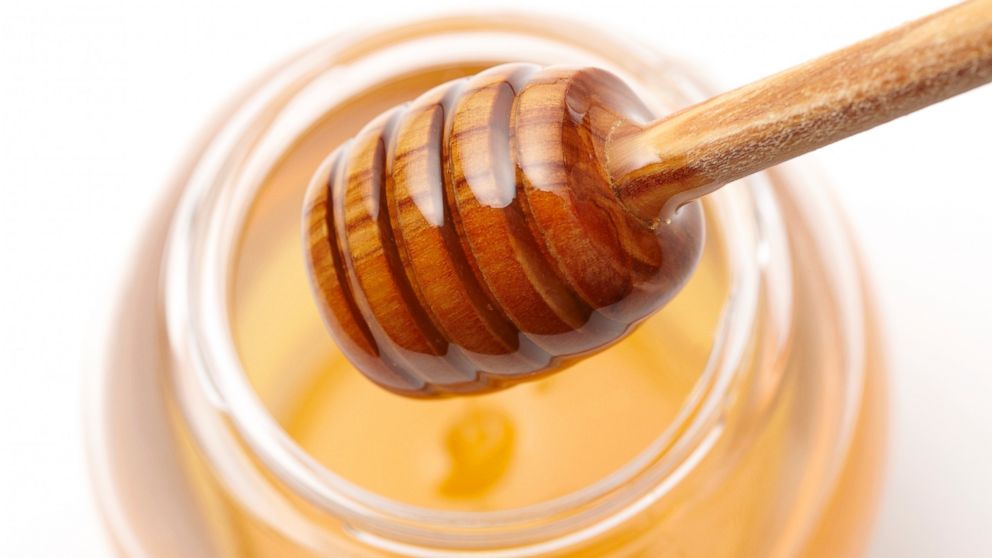3 Things You Should Know About Natural Sugar
How to sweeten up your life a little, without wreaking havoc on your waistline.

— -- intro: As a nutritionist, I advise my clients to avoid soda, eat fruits and veggies, and sweeten recipes conservatively with natural options, like organic honey or maple syrup. They’re less processed than refined sugar and they contain other beneficial substances, including antioxidants. Some new research, however, has left people wondering if these better-for-you sweet foods are actually OK to consume, particularly for weight loss.
Here’s a summary of the study and my bottom-line tips on how to sweeten up your life a little, without wreaking havoc on your waistline.
10 Reasons to Give Up Diet Soda
University of Southern California researchers looked at the responses of 24 volunteers who consumed flavored beverages that were sweetened with fructose one day, and glucose another. Brain scans revealed that when subjects looked at images of food after consuming fructose, there was greater activity in the area of the brain tied to reward. The participants were also asked if they’d rather eat the food immediately, or forgo it for a monetary bonus. When drinking fructose, more of the men and women chose the immediate food reward. The researchers said the results indicate that, relative to glucose, fructose has less of an appetite-suppressing effect, and may be more likely to trigger eating.
Why the difference between the two sweeteners? When you consume glucose, your pancreas secretes insulin, which allows cells to use it for energy. Insulin also tells your brain that you’ve received fuel, which curbs appetite. Since fructose doesn’t stimulate insulin secretion, you brain may not be getting an “I’m good, stop eating now” message.
So how does all of this relate to honey and produce? Well, honey, maple syrup, molasses, fresh fruit, and even some veggies (like sugar snap peas), all contain fructose. But in my opinion the aforementioned study doesn’t mean you should eliminate the lot.
To reap the rewards without disrupting your appetite—or derailing your weight—follow these three tips.
5 Natural Appetite Suppressants That Really Work
quicklist: 1category: title:With fruit, fresh is besturl:text:While fruit is a natural source of fructose, the sweetener is also bundled with fiber, water, vitamins, minerals, and antioxidants. And in fresh fruit the fructose isn’t concentrated. For example, one cup of blueberries naturally contains about 7 grams of fructose, along with 3.5 grams of fiber and several key nutrients. By contrast, a 12-ounce can of soda sweetened with high fructose corn syrup contains about 22.5 grams of fructose, with no fiber or nutrients. The fluid and fiber in fresh fruit (in addition to the volume and chewing involved) also positively impact fullness and satiety.
In other words, the amount and form of the fructose you consume matter. If you’re concerned about fructose and appetite, stick with fresh fruit. If you eat dried fruit, remember that the portion shrinks by about three quarters, so you should eat a serving no larger than the size of a golf ball. The same holds true for juice. Some of my clients love fresh-squeezed orange or grapefruit juice at breakfast, but I advise them to drink a shot, not a tall glass, and capture as much pulp as possible.
quicklist: 2category: title:Don’t drink your sugarurl:text:The USC study was done with beverages. Previous research has shown that sugar in the form of a thin liquid isn’t as filling as solid forms, so you won’t compensate by eating less food when you drink a soda, lemonade, or sweet tea. That means the extra calories just add to your overall intake, and if you don’t burn them off, you’ll either prevent weight loss or further fill up your fat cells. For this reason, I advise clients to choose solid sweet treats, preferably made with ingredients that offer some nutritional value.
30 Healthy Foods That Could Wreck Your Diet
Other studies have shown that thickness also prompts eaters to perceive foods as more filling. In a University of Sussex study, researchers asked volunteers to rate how filling they expected various thick, creamy drinks to be. The subjects did this by identifying how much solid food they thought they would need to eat to experience the same level of fullness. The conclusion: thickness, not creaminess, impacted the expectation that a drink would better suppress hunger. In two additional studies, thicker drinks were found to suppress actual hunger (not just anticipated hunger, as in the Sussex study) more than thinner versions of beverages with the same calorie levels. This is one reason I’m a big fan of chia seeds—they soak up water to form a thick, gel-like texture, which adds a satisfaction factor to sweetened puddings, smoothies, and parfaits.
quicklist: 3category: title:Limit sweets overall, from all sourcesurl:text:I’ve had many clients over the years who have tried to eliminate sugar completely only to experience intense cravings, and eventually break down, and binge eat sweets. If all or nothing doesn’t work for you, you’ll be happy to know that even the strictest recommendations on sugar, from organizations like the American Heart Association (AHA), don’t recommend banishing it completely.
According to the AHA, the daily target for added sugar (e.g. forms like honey and sweetened foods) should be no more than the equivalent of 6 level teaspoons for women, and 9 for men. That means adding a teaspoon of organic honey or maple syrup to Greek yogurt, having a few squares of dark chocolate each day, or enjoying an occasional dessert is well within the limits. It’s also far less the 22 daily teaspoons the average American takes in each day.
12 Foods That Control Your Appetite
Cynthia Sass is a registered dietitian and Health’s contributing nutrition editor. She privately counsels clients in New York, Los Angeles, and long distance, and is the sports nutrition consultant to the New York Rangers NHL team and the New York Yankees MLB team.




